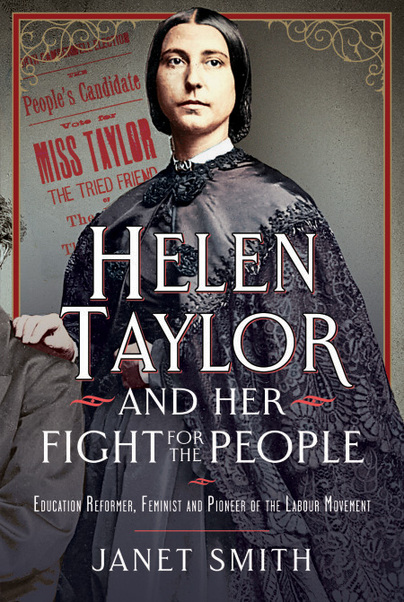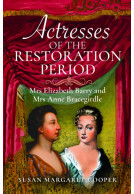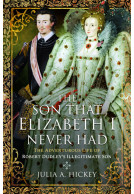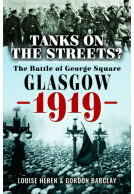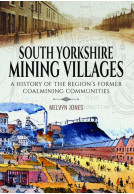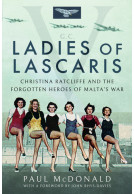Helen Taylor and her Fight for the People (Hardback)
Education Reformer, Feminist and Pioneer of the Labour Movement
Imprint: Pen & Sword History
Pages: 216
Illustrations: 12 mono illustrations
ISBN: 9781036125714
Published: 25th June 2025
(click here for international delivery rates)
Need a currency converter? Check XE.com for live rates
Despite being hailed as 'the foremost woman of her time' in the 1880s, Helen Taylor's legacy has largely been overshadowed, often reduced to her role as John Stuart Mill's stepdaughter and a divisive figure within the Victorian women's suffrage movement. However, this biography seeks to rediscover the complex woman behind the often-deserved label of 'difficult to work with,' exploring the politics and convictions that made her both admired and reviled.
As the daughter of philosopher Harriet Taylor and stepdaughter of Mill, Helen emerged from their shadows to become a powerful public figure, fighting for women’s rights, education reform, land nationalization, socialism, and Irish Home Rule. In 1885, she became the first woman to run as a parliamentary candidate, representing Camberwell Radical Club. However, by the late 1880s, poor health forced her withdrawal from public life, and her contributions faded into obscurity. Helen’s vital role in shaping progressive movements was lamented even in her time, with reformers like Frances Soutter lamenting her erasure from history. Helen Taylor and her Fight for the People reclaims Helen's rightful place as a pioneering force in the fight for democracy and gender equality in the Victorian era.
Rating: 5 out of 5 stars
NetGalley, Hilary Gross Mackay
I really enjoyed this novel! Dr Smith has written a captivating book about Helen Taylor. Helen Taylor was an amazing woman and this account of her life is a must read! If you're interested in Social History and English history, I highly recommend this book! Dr Janet Smith has written so well!
It was moving to read about the end of Helen’s life, which revealed a more human side to her and her living relatives. A book of significance for anyone interested in 19th century feminism and factions within the suffrage movement, amongst other significant political issues of the day.
NetGalley, Pippa Elliott
Rating: 5 out of 5 stars
NetGalley, Robin Joyce
Janet Smith has amassed a spectacular amount of information. Not only does Helen Taylor, largely unknown, come to life but so much more is gleaned about her mother, Harriet Taylor (later, Stuart Mill) and her stepfather, John Stuart Mill. This is an immensely engaging book. The content is inspiring, in its volume, the range of topics and the enthusiasm with which Smith investigates long held beliefs about Helen Taylor, to show another side to this formidable and remarkable woman. Although the writing is less dynamic than my experience with Pen and Sword publications, its accessibility is intact – the content is such a driving force that this non-fiction book could be classed a ‘page turner.’
There are three parts, covering Helen Taylor’s early years as the daughter of Harriet Taylor, separated from her husband, and close friend of John Stuart Mill; her public life after the death of her mother, John Stuart Mill, and her good friend, Kate Amberly; and the years between 1886 and her death in 1907.
It is worth reflecting on the place that Smith gives Helen Taylor’s personal life in this book, so clearly dedicated to her work in education, as a feminist and as a member of the labour movement. Helen Taylor has been seen as an abrasive figure, a woman jealously holding on to John Stuart Mill’s legacy, and overall, a difficult woman politically and personally. Smith seeks to show another side to the way in which Taylor approached her personal and political relationships. Her insightful and sensitive discussion of Helen Taylor, her family and personal relationships and those with her fellow campaigners is a shining feature of this biography. Readers involved in any political movement will recognise the dilemmas that arise, the cracks that appear insurmountable when fighting for crucial policies and ideas, and the heartbreak that surrounds friends lost over conflicting aspirations and strategies. Smith’s work is a wonderful insight into this world.
The political world that Helen Taylor inhabited, and in which her background fostered her responses was that of campaigning for positions, such as those on the London School Board and Parliament, working assiduously for a feminist approach to issues, and land reform. For a brief time, she adopted an acting career. However, her background almost guaranteed her adoption of a political life. She was tireless in working on her stepfather’s papers, and here John Stuart Mill deserves an accolade. Rather than accept his wife’s and daughter’s assistance with his work and let it go unremarked, he assiduously referred to their contribution to his ideas. Smith’s reference to features such as this is another engaging part of reading her work.
There are endnotes, a bibliography and index. Several photos accompany the text, schools, posters, her homes, and herself with family, her family members, and friends. These end fittingly, with Helen Taylor’s grave inscription, ‘She fought for the People.’
You know it’s going to be a good book when it starts with a brawl. Helen Taylor and Her Fight for the People by Janet Smith resurfaces the story of an important figure in women’s and social movements in England (and Ireland and Scotland) in the late 19th century. Often remembered (if at all!) as Harriet Taylor Mill’s daughter and John Stuart Mill’s stepdaughter (she was also his collaborator), she was in her own right a prominent and accomplished political figure. The causes she advanced included equal pay for women teachers, free education for all, land reform (she advocated nationalizing all land), Irish home rule, and of course, women’s suffrage. A London school board member, her advocacy for education also included an equitable curriculum for girls and, in effect, day care at schools (which she had seen in other countries), so that instead of being made to stay home to take care of their younger siblings, girls could attend school. Taylor was also the first woman to run for Parliament (the catalyst for the aforementioned brawl at a campaign event). She was a forceful personality (as she would have needed to be), and the book is a reminder of how, frankly, silly it is to fixate on a female political figure’s likability instead of her efficacy. A contemporary who recognized that described her as “one of the most gifted champions of the working class which this country has ever had.” In addition to reconstructing Taylor’s contributions, the book is a lively and engaging political and social history of England and beyond.
NetGalley, E W Parker
About Dr Janet Smith
Janet Smith holds a PhD in Women’s History and a M. A. (distinction) in Postcolonial Cultures from London Metropolitan University. She is a member of the Royal Historical Society and the National Coalition of Independent Scholars.
Janet became interested in Helen Taylor during her Masters course when she read a brief reference to her in a book on the Irish Land War (1879-1882) as a well-to-do English woman who helped to build huts to shelter the evicted tenants. She searched for other literature on Taylor but found it sparce and mainly negative. Convinced there was more to this woman than someone who would argue with her own shadow, Janet decided to research her life for a PhD. Janet has published articles and chapters in academic journals and books on Taylor and on the philosophies underpinning the nineteenth century women’s movement.







